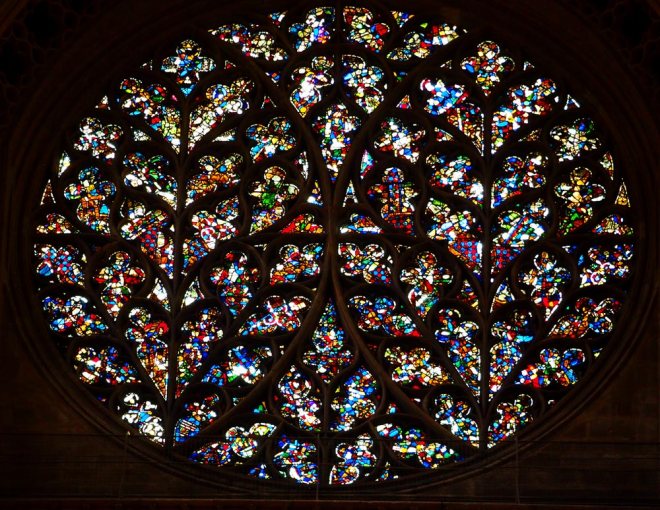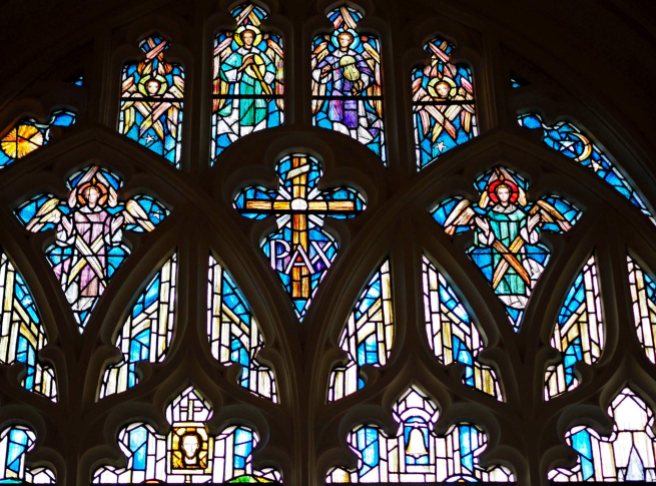There’s a lot of stained-glass in Lincoln cathedral. Many different dates and styles from medieval (†13C) to the mid-nineteenth century. The nave is lit by intense colours from the mainly mid-nineteenth century windows such as these memorial windows.
Several different studios made the windows on the south side of the nave, which explains the variations in style. The windows in the Chapter House were all by one studio, Clayton & Bell, to give a more cohesive look.

Boole is a name that I am very familiar with and not in a good way! It was George Boole who devised the Boolean Logic system, based on the idea that a thing cannot simultaneously have a set of properties and not have them. The power in an electronic circuit is either on or off. Sounds pretty simple. Boole converted this concept into abstract symbols to help solve complex problems. In the Boolean system ‘true’ or ‘on’ is represented by 1 and ‘false’ or ‘off is 0. Known as Boolean Gates. His ideas laid the foundation of mathematical logic and provided the theoretical underpinning for all modern computer logic.
So why do I dislike Boole? Because part of my computer degree was in mathematics, more precisely, Boolean Algebra. Not only did I find it impossible to understand, it almost caused me to fail my first year math’s exam! But I did seek out his memorial window.

At the crossing you find the Dean’s Eye to the north which contains some original pieces depicting the Last Judgment. This window survives from the time of Hugh of Avalon’s re-building between 1192 and 1235.
To the south is the Bishop’s Eye filled with a kaleidoscope of ancient glass. It was most likely rebuilt circa 1325–1350 after the completion of the Minster and shows the beginning of the decorated style with the flowing tracery representing leaves – a unique pattern.

The impressive West Window is from 1859 and contains Old Testament kings and prophets. (Augustus and Frederick Sutton)
The Great East Window was only the second nineteenth century window to be installed in the cathedral and subject of a great debate. Such is its size that it is not possible to photograph it without tilting the camera upwards – hence the peculiar angle.
The nearby Service Chapels allow a contrasting glimpse of modernism on stained glass in the twentieth century.
And in the Chapter House an oculus showing ‘The Council at Jerusalem, surrounded by various other scenes from The Acts of the Apostles’. In memory of Jacob Clements, (1820-98) sometime SubDean at the Cathedral. (Clayton & Bell).
And another window in the Chapter House depicts the 12th century cathedral burning (Clayton & Bell 1874)
So many scenes catch my eye, and the colours are incredible.
Below, Dean Kaye escorts John Wesley on his last visit to Lincoln Cathedral in 1799 (Clayton & Bell 1909) in the Chapter House.
Familiar Old Testament and New Testament scenes are depicted. My eyes are drawn to the different styles, the stylised flowers, the geometric shapes and patterns.
And finally I have a question for you, the viewer. I’m not entirely happy with showing the full length of the windows, because they are narrow and not very easy to see, which is why I select portions to enlarge. However I do realise that it is nice to see the whole window as then you get a sense of the patterns and tone. So I would be grateful for any feedback you can give me on this subject. In future should I just select samples of the windows so you get a better view, or not?
Thanks 🙂














































































